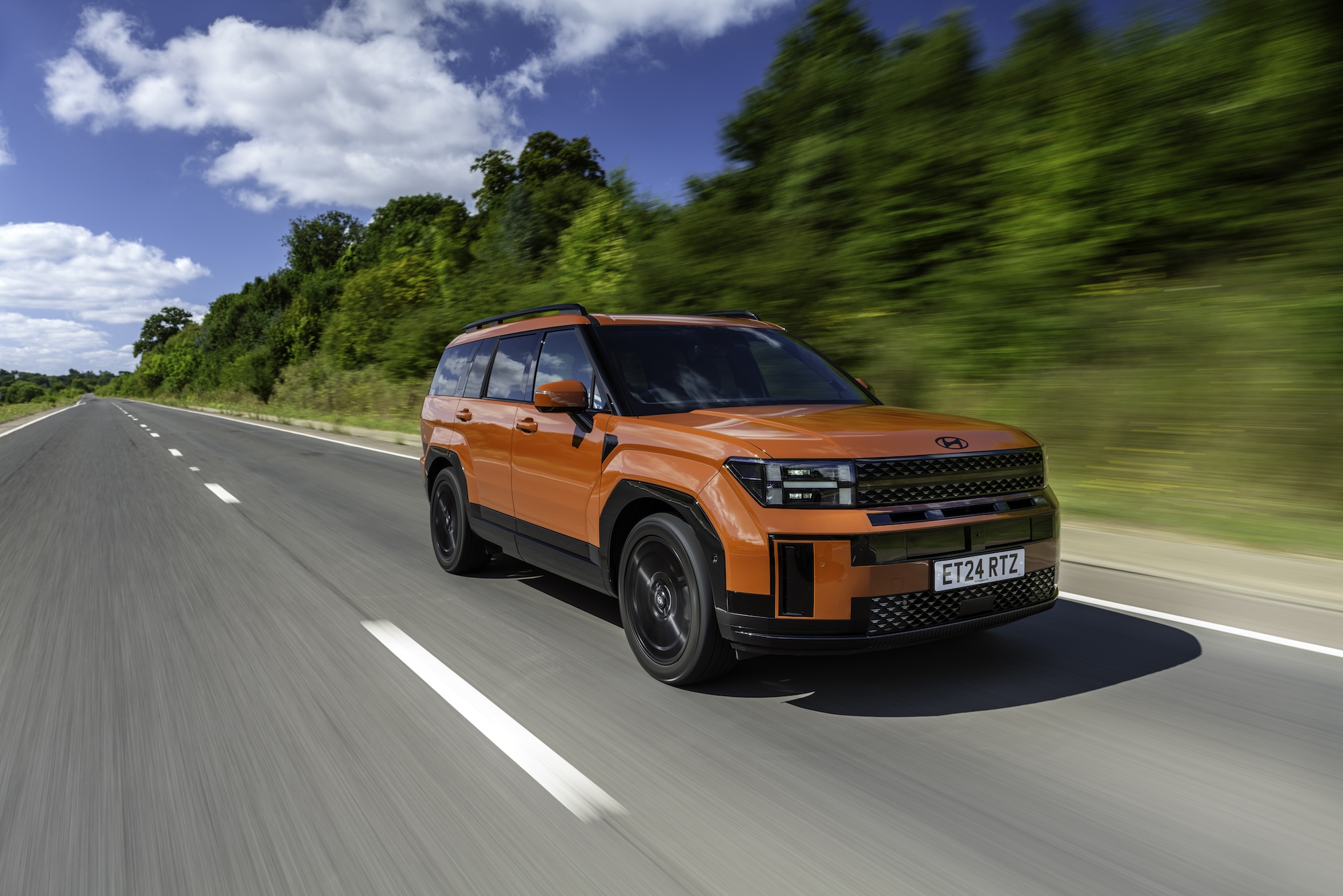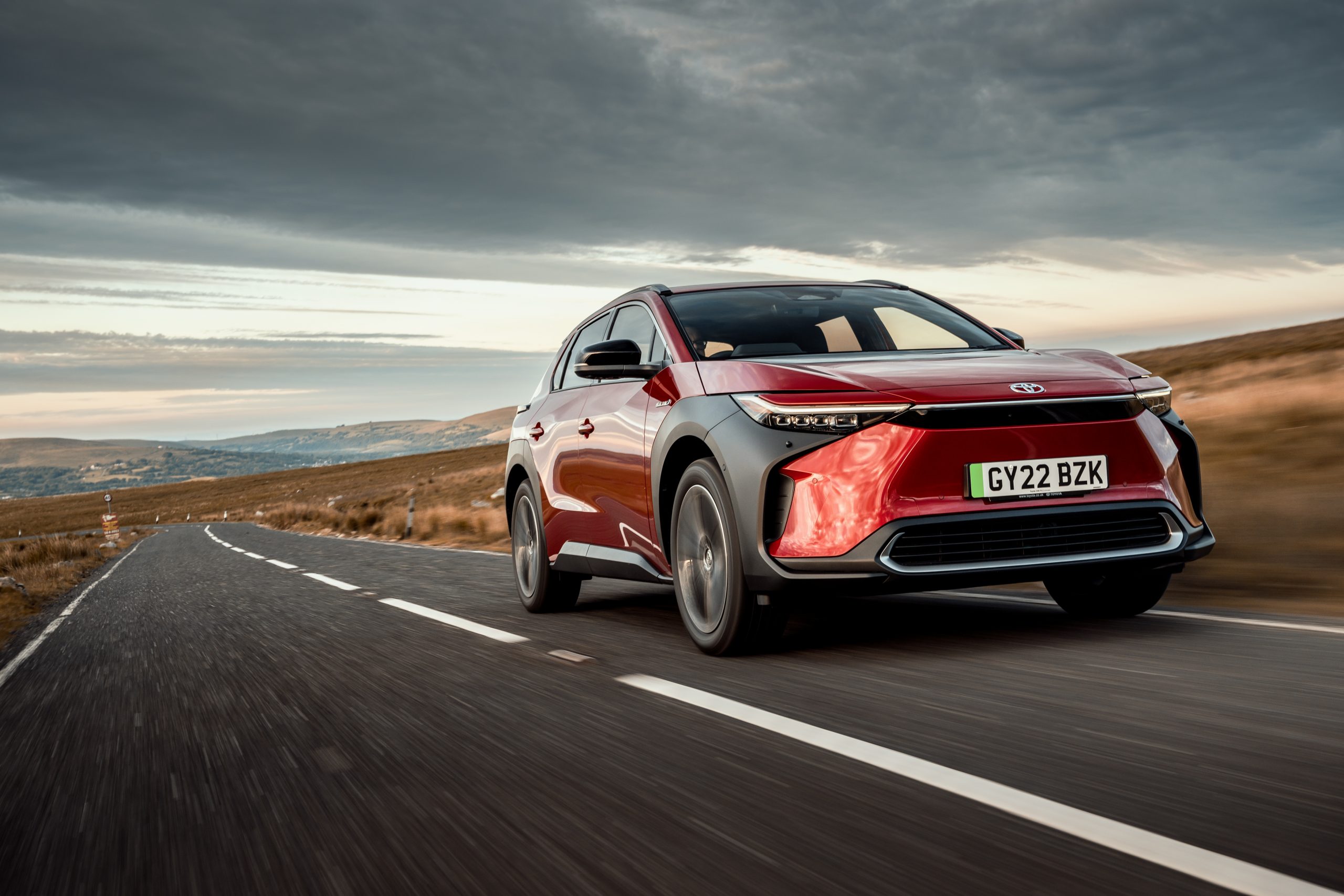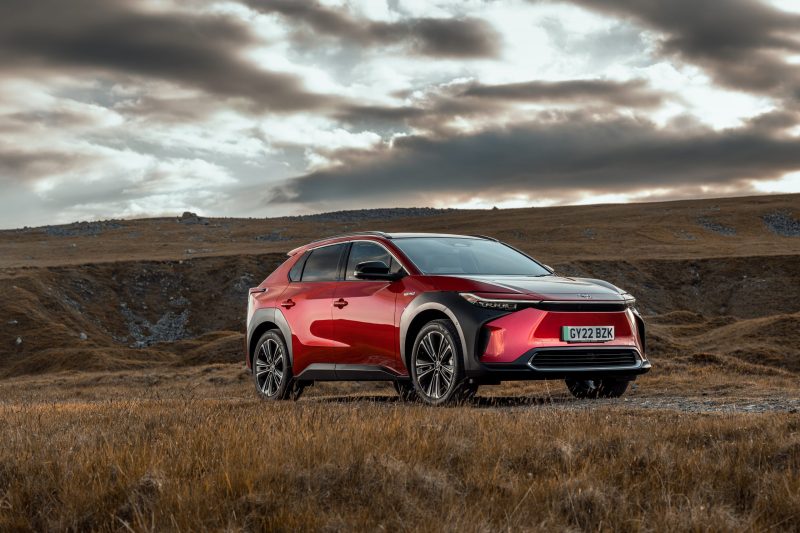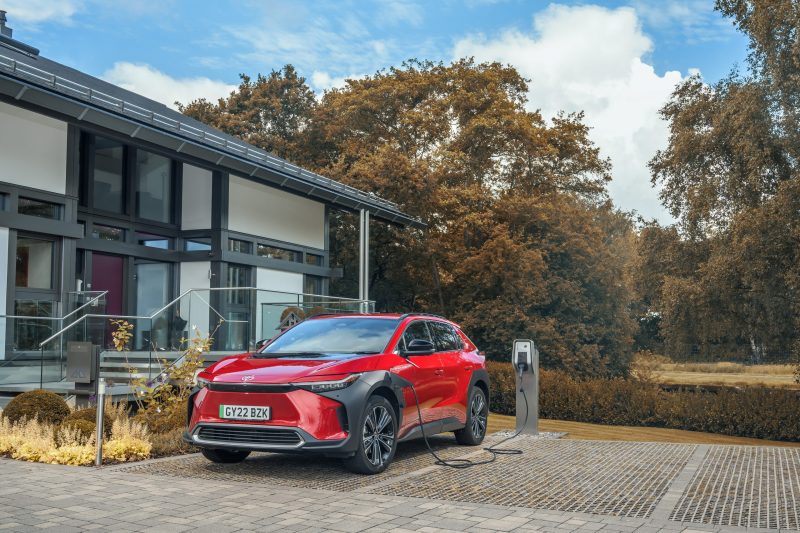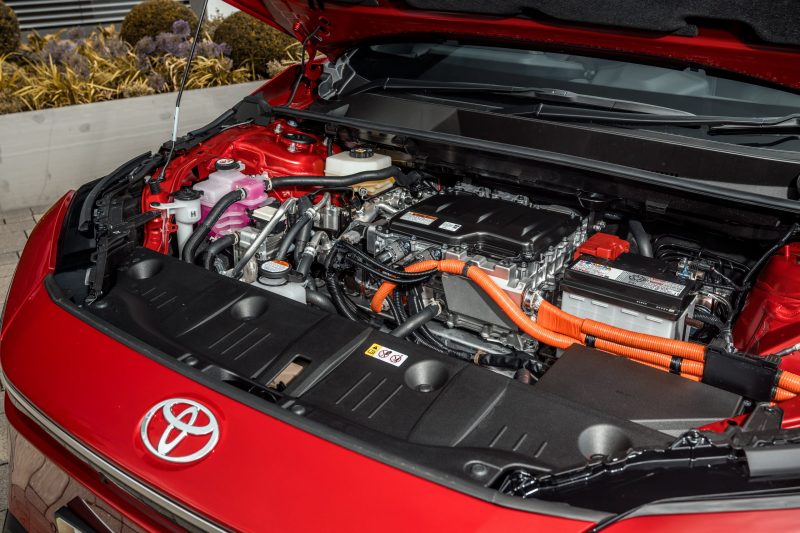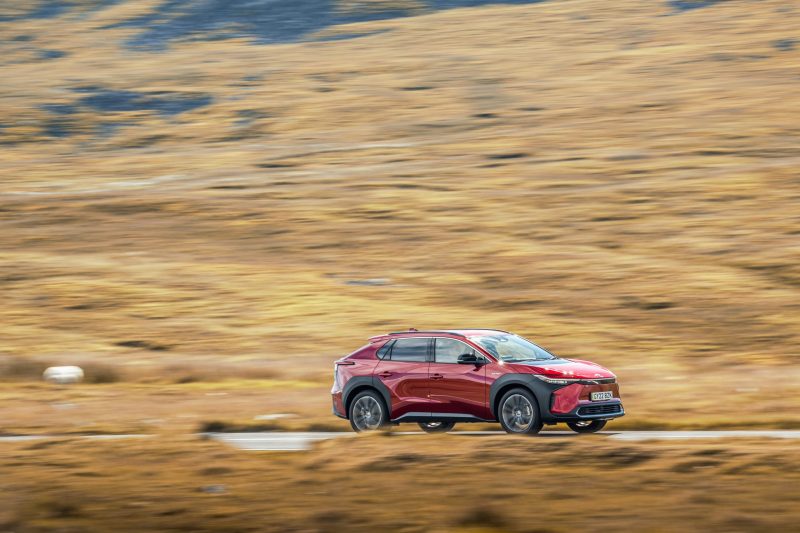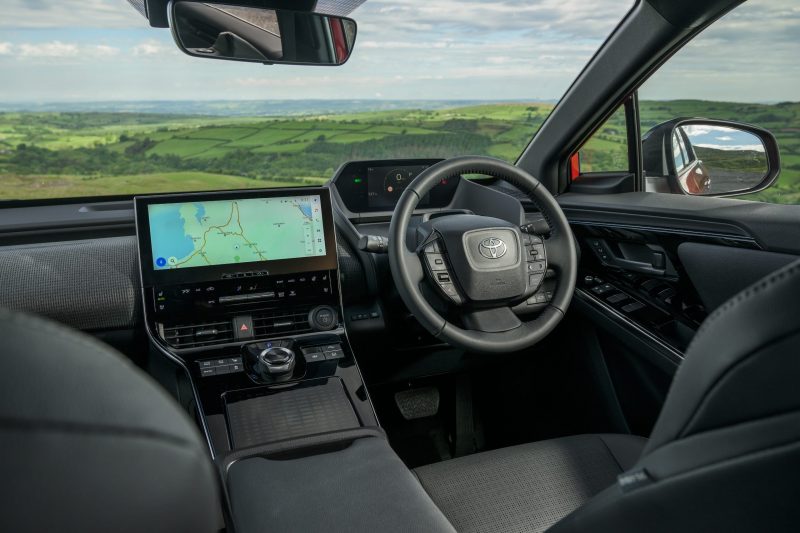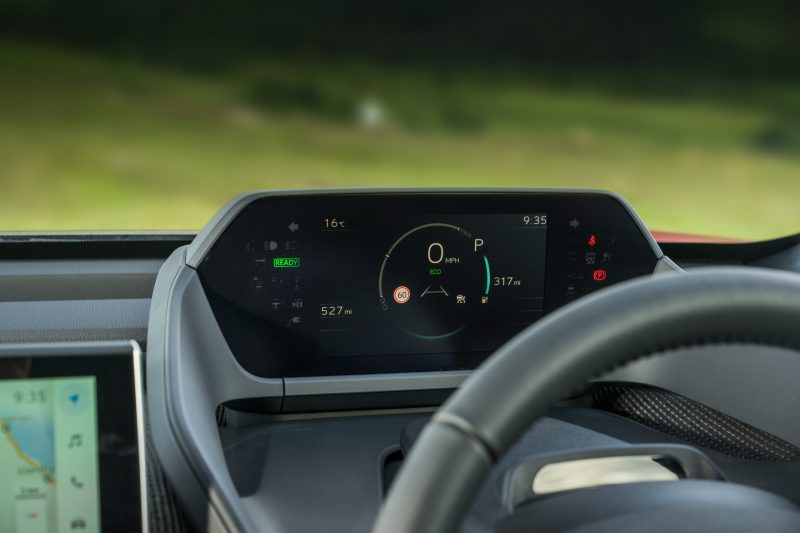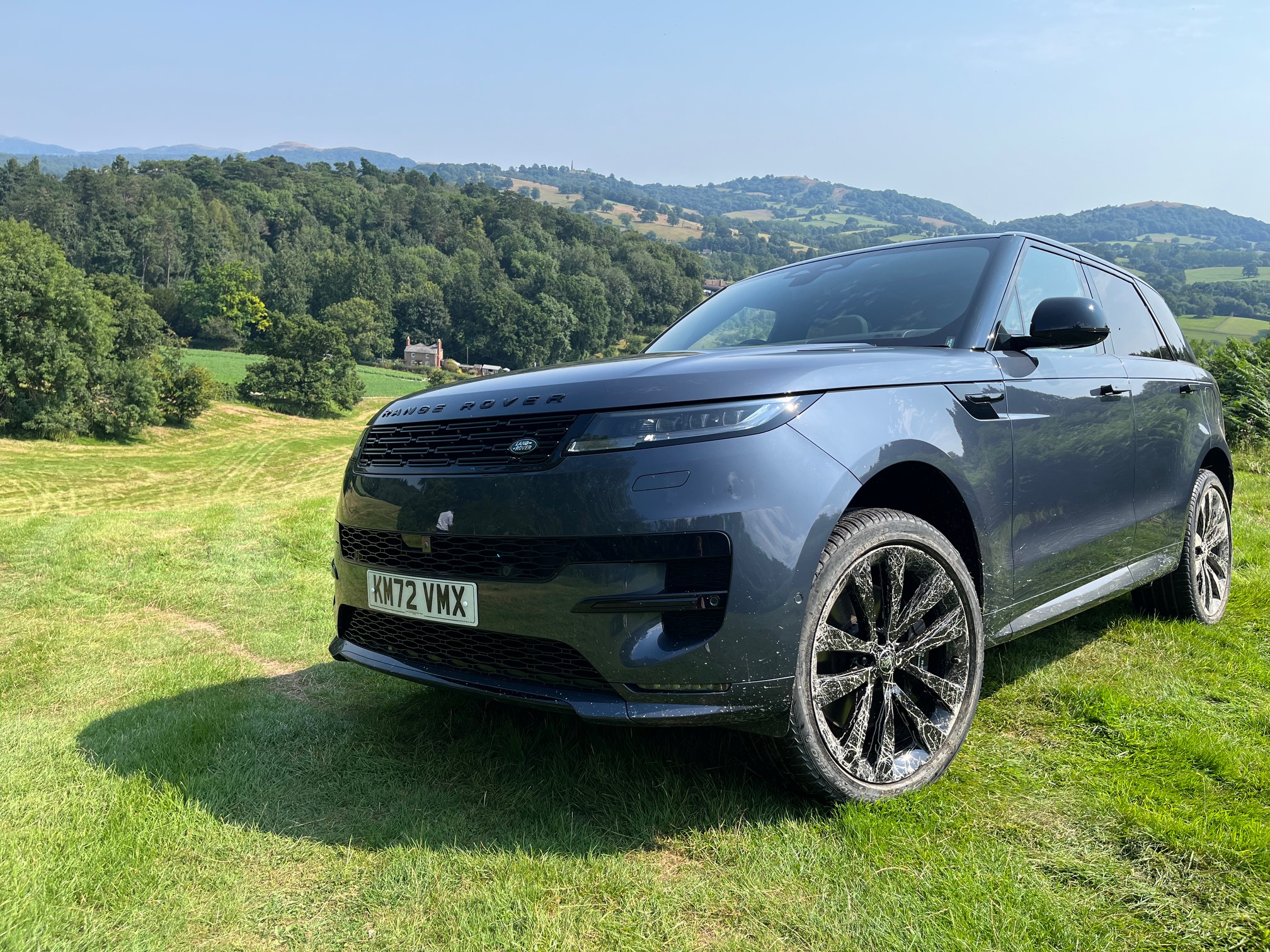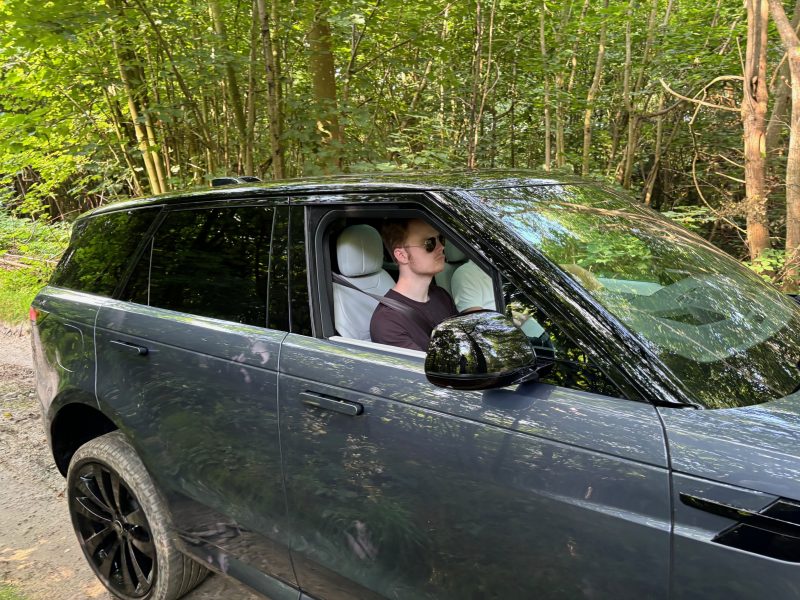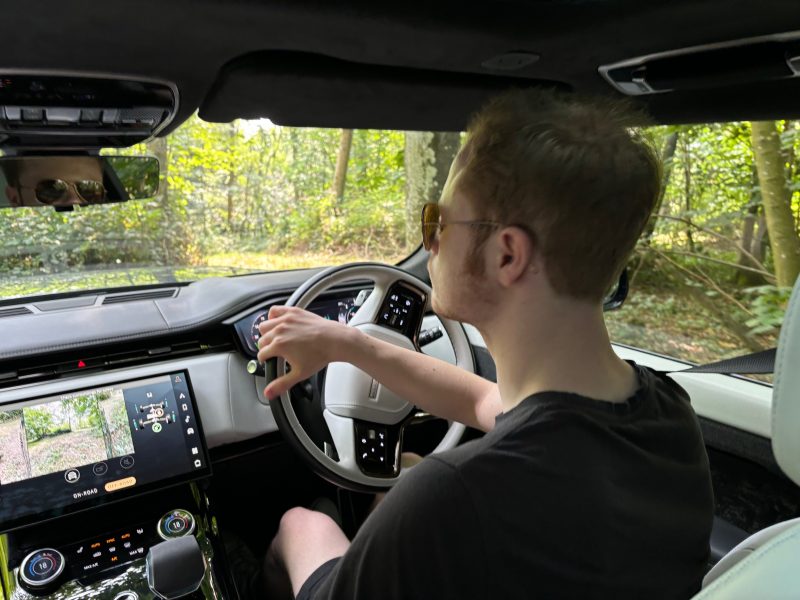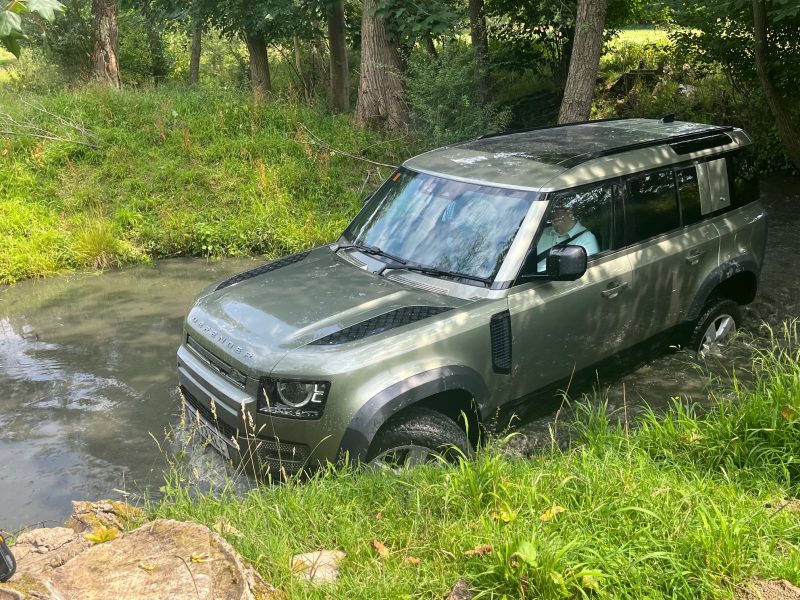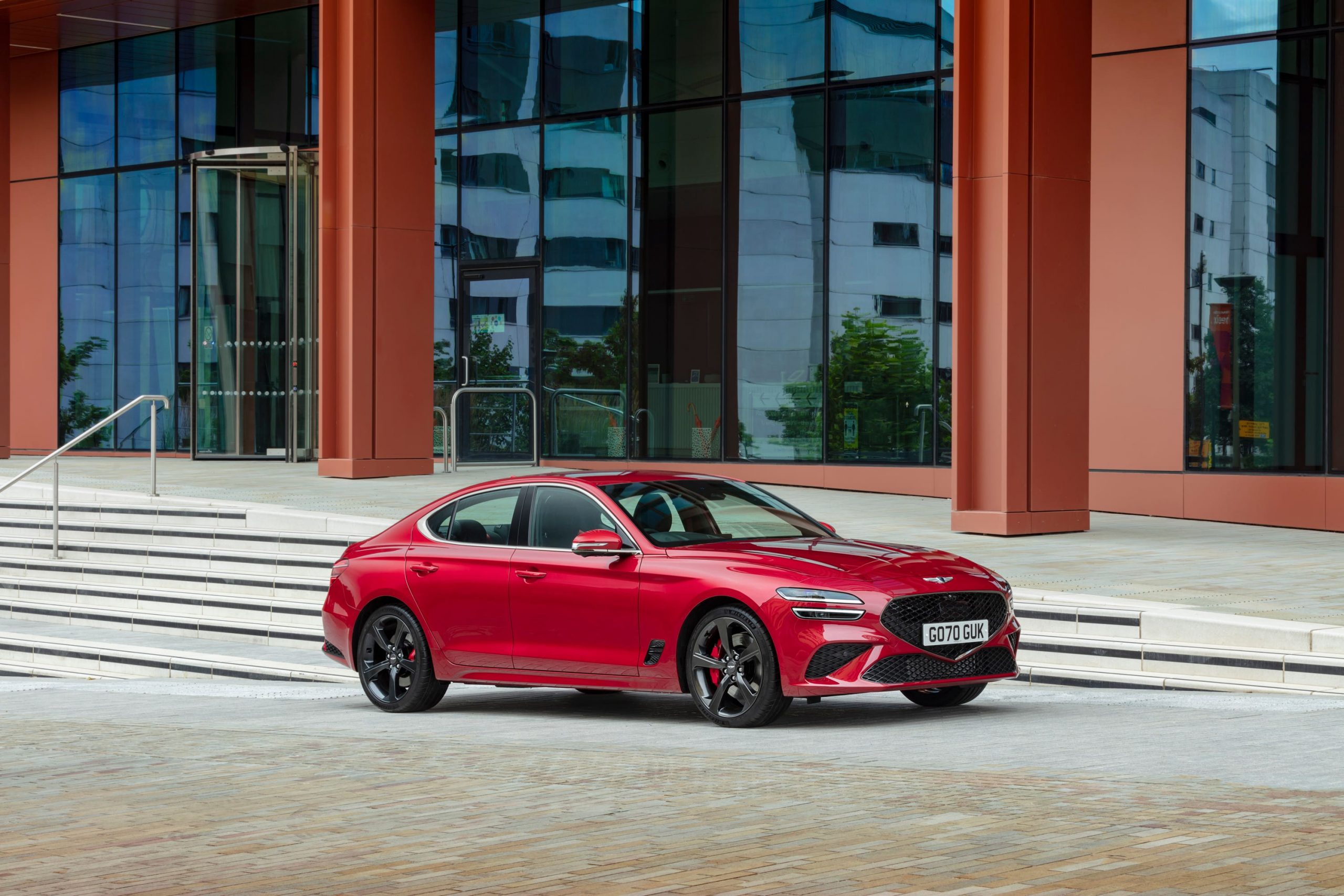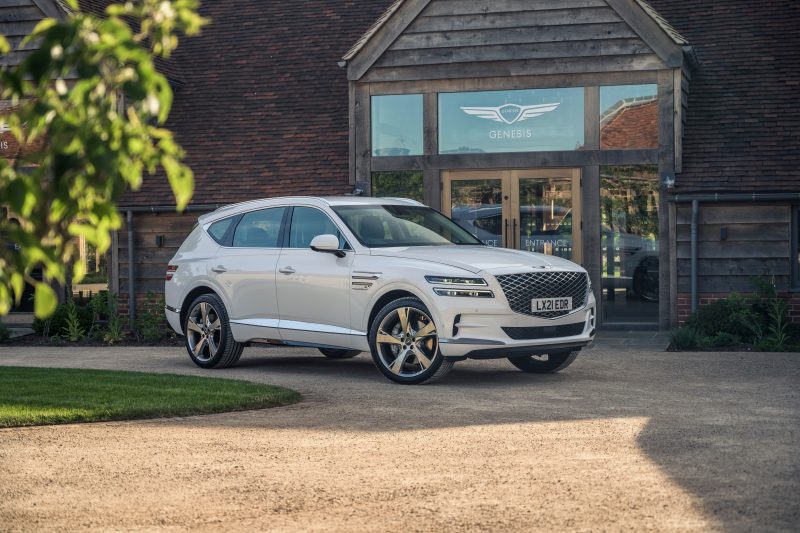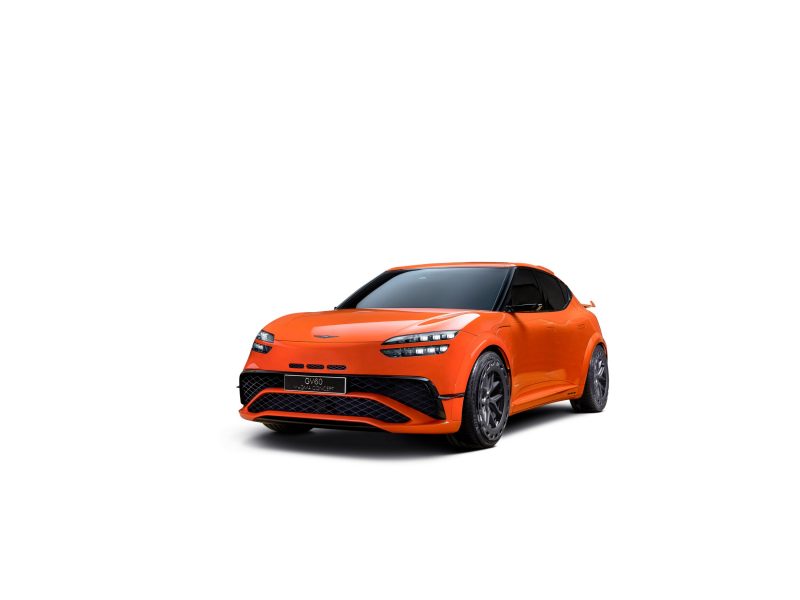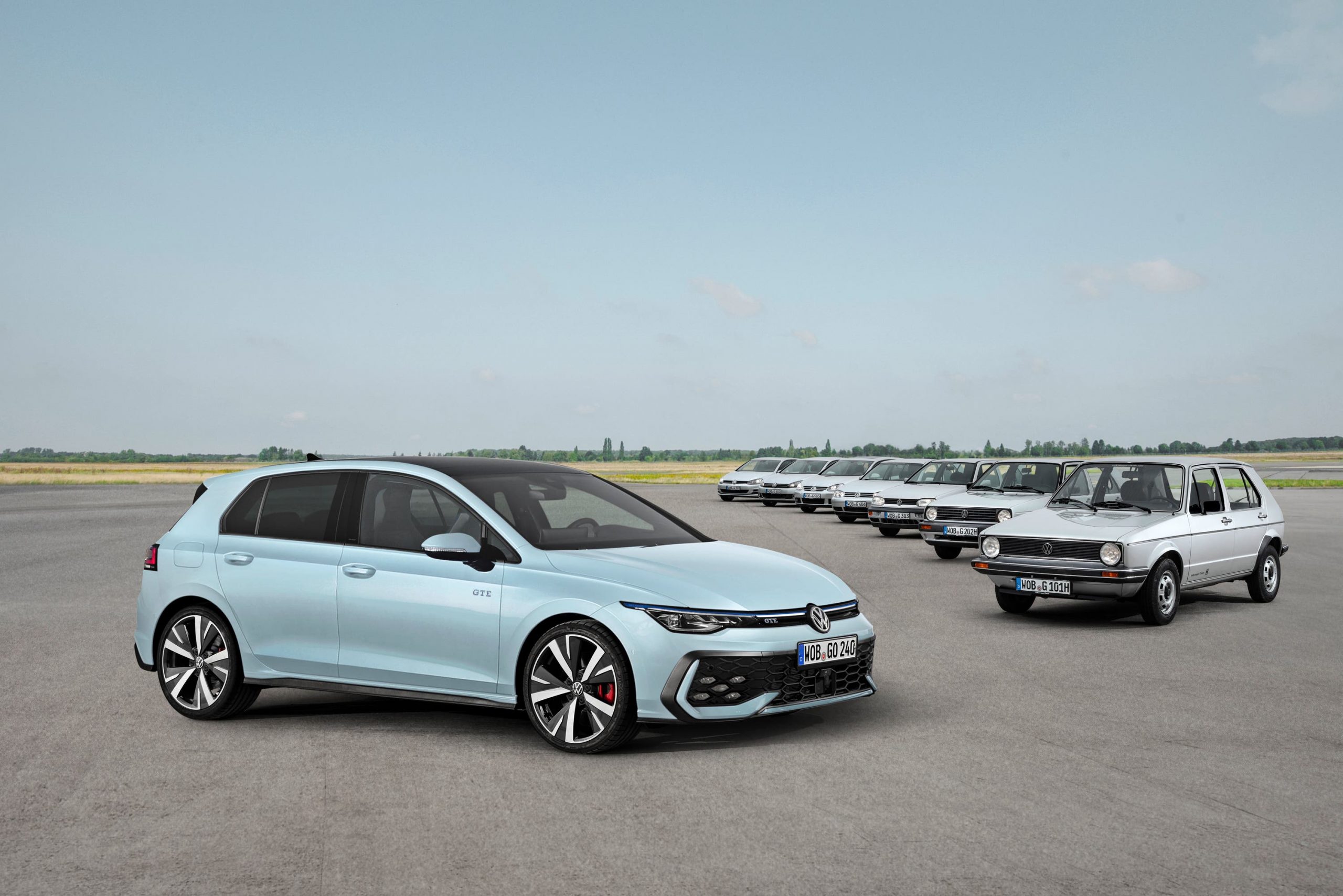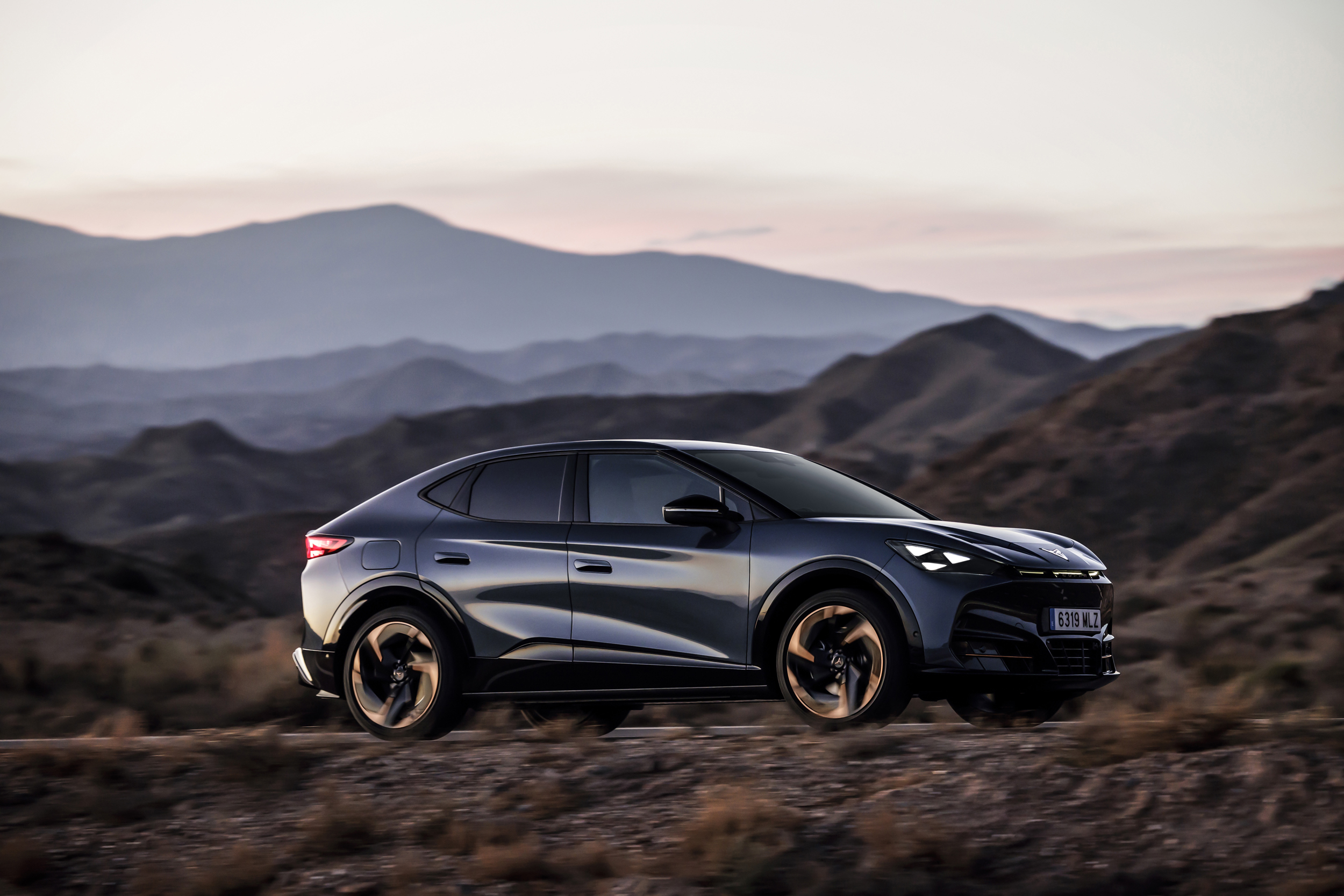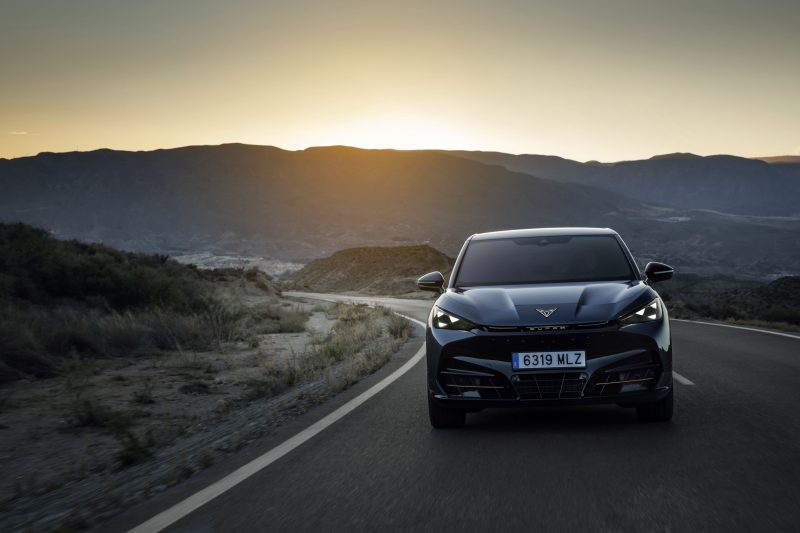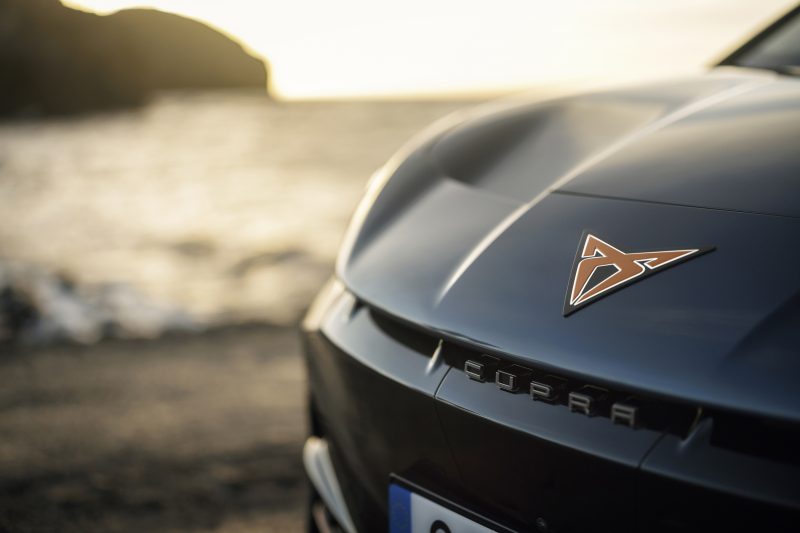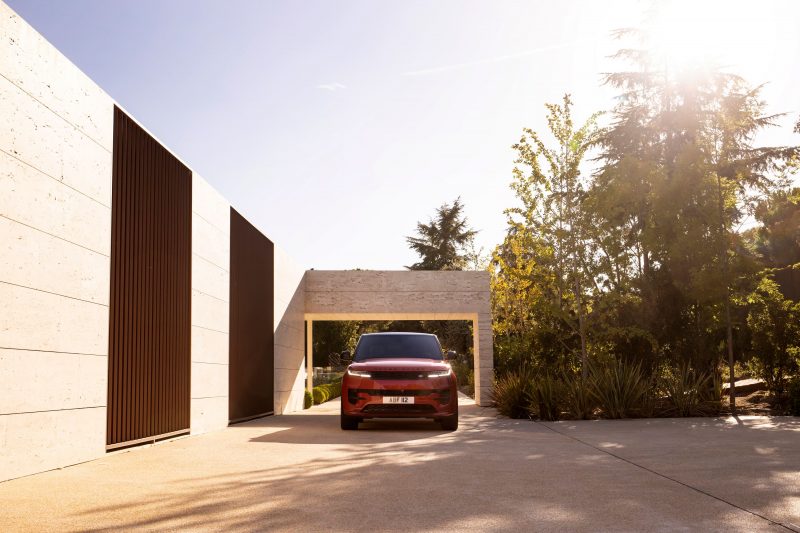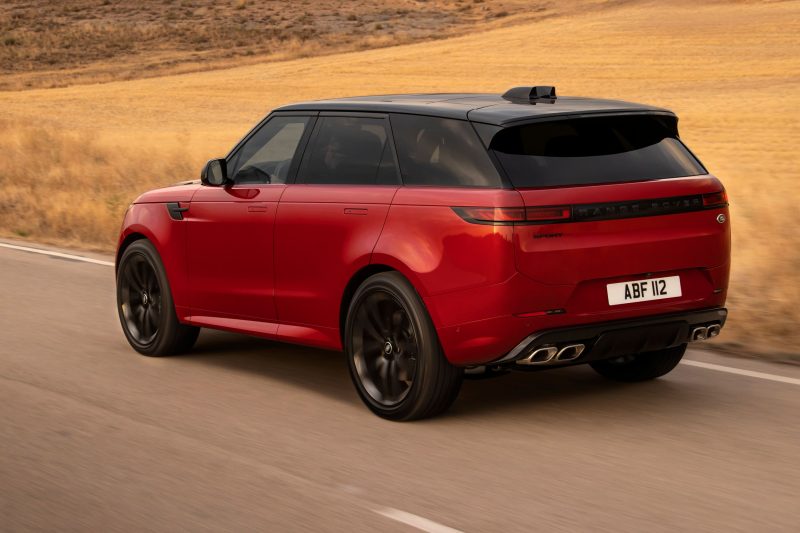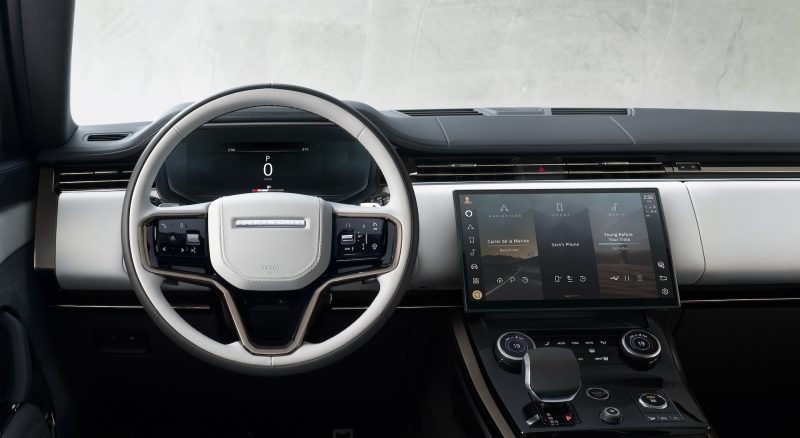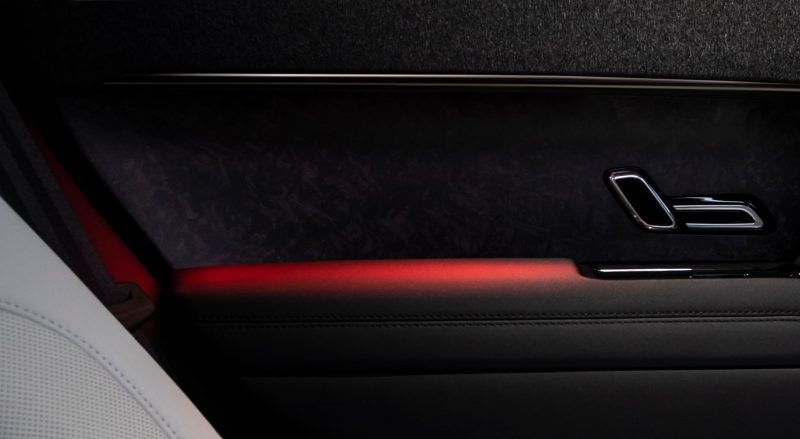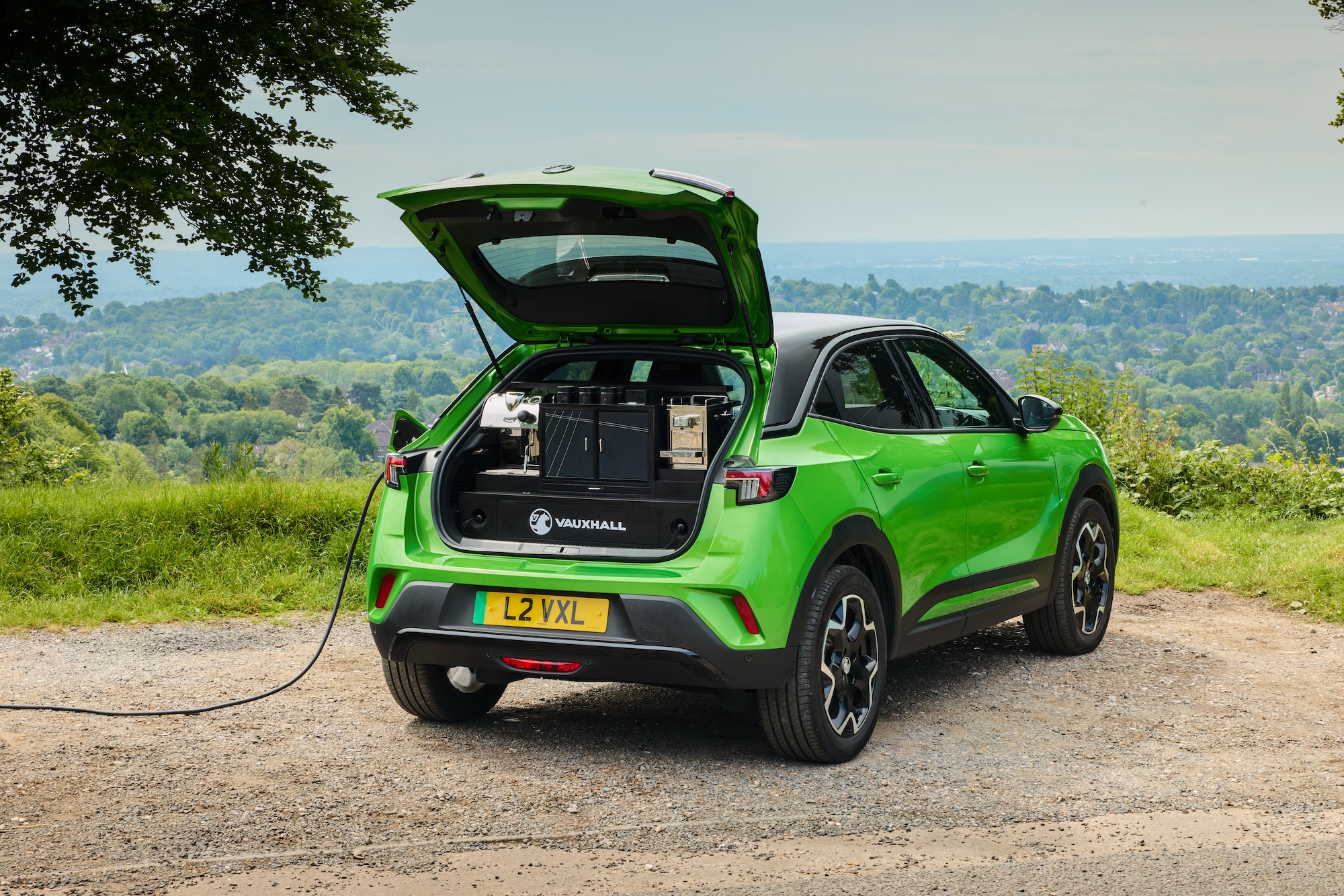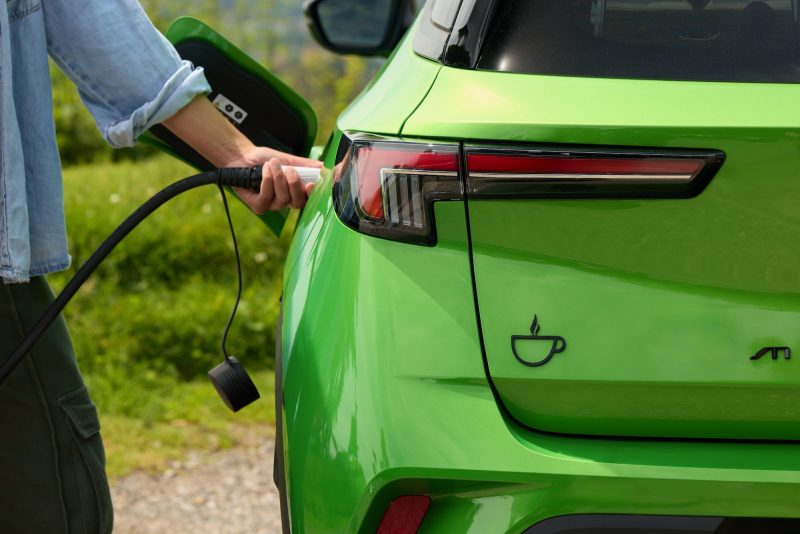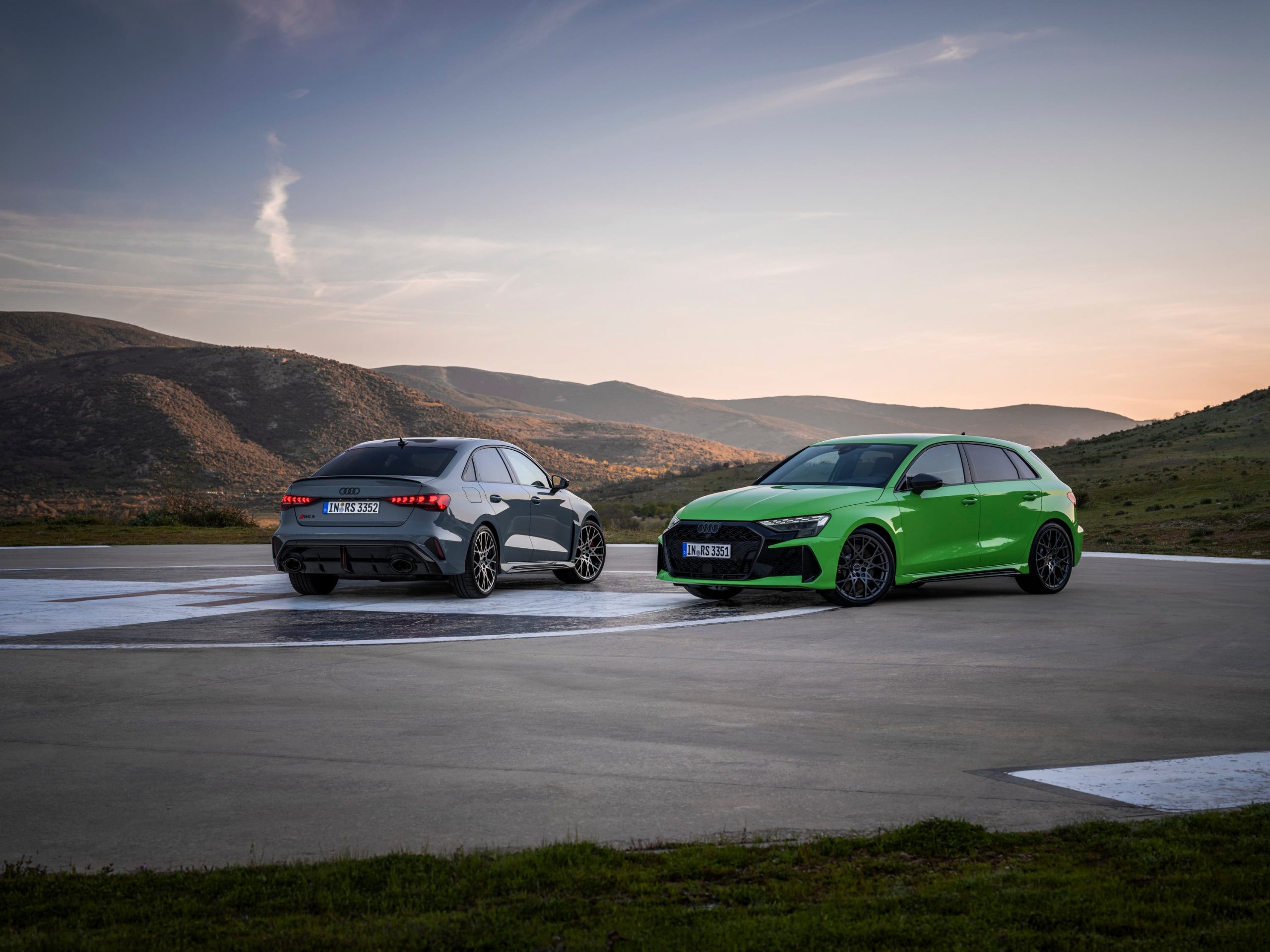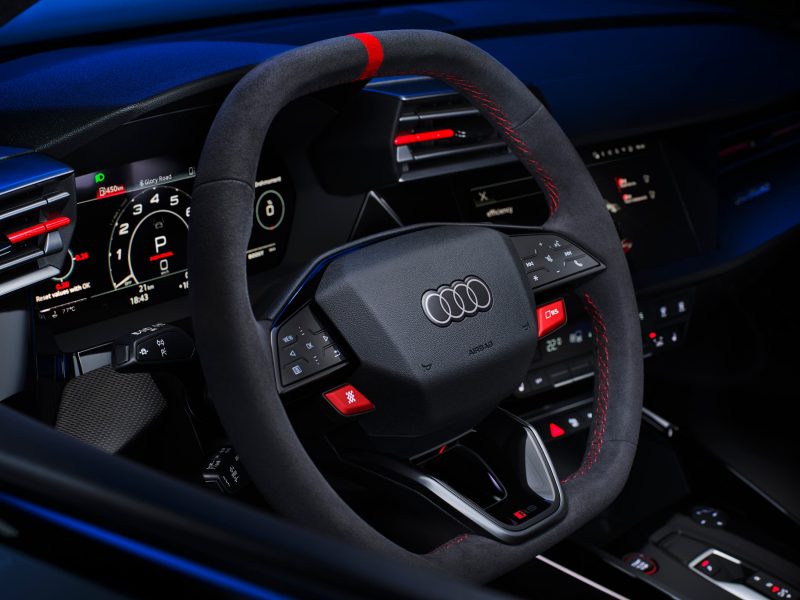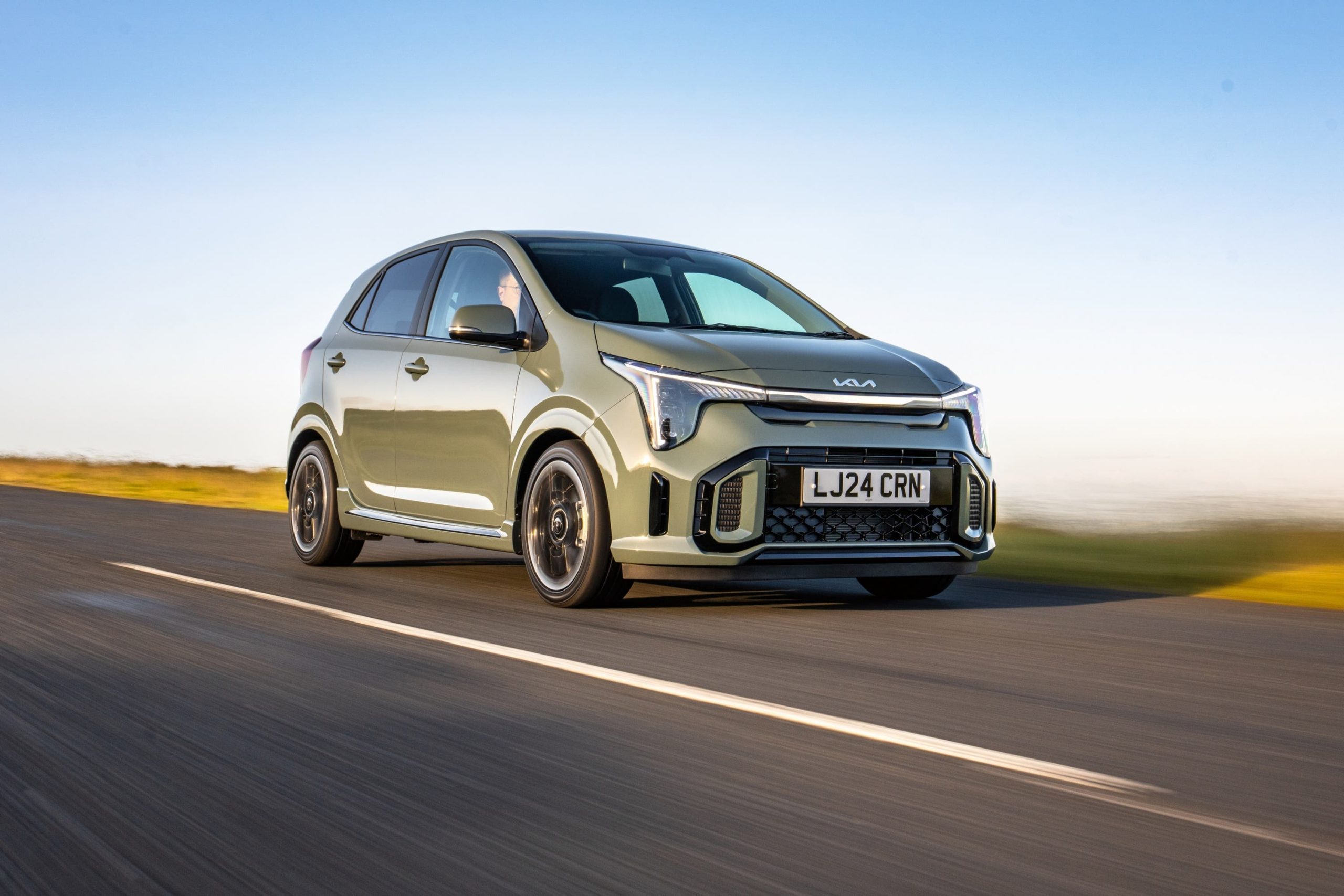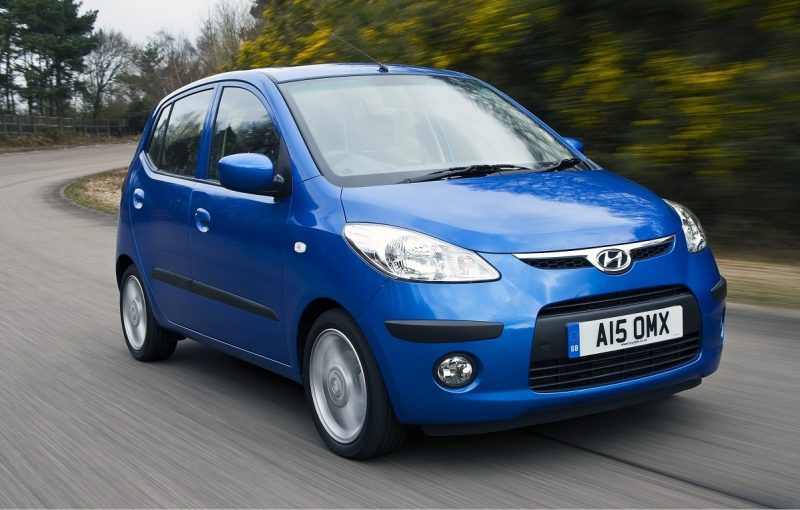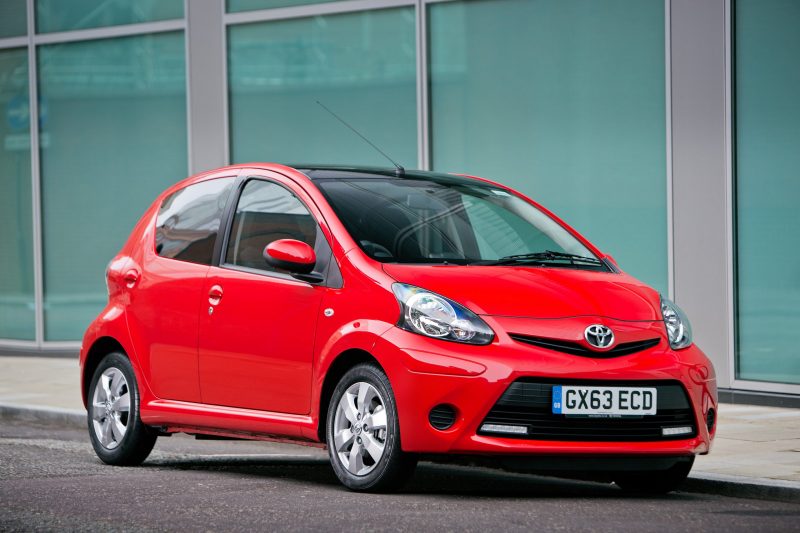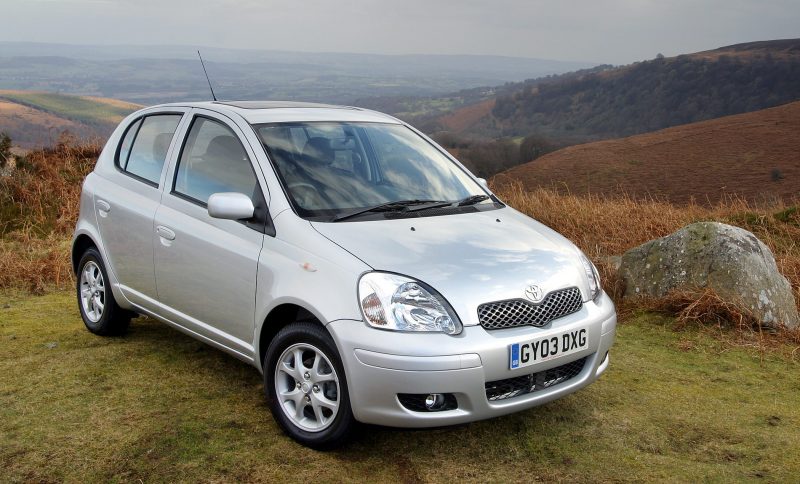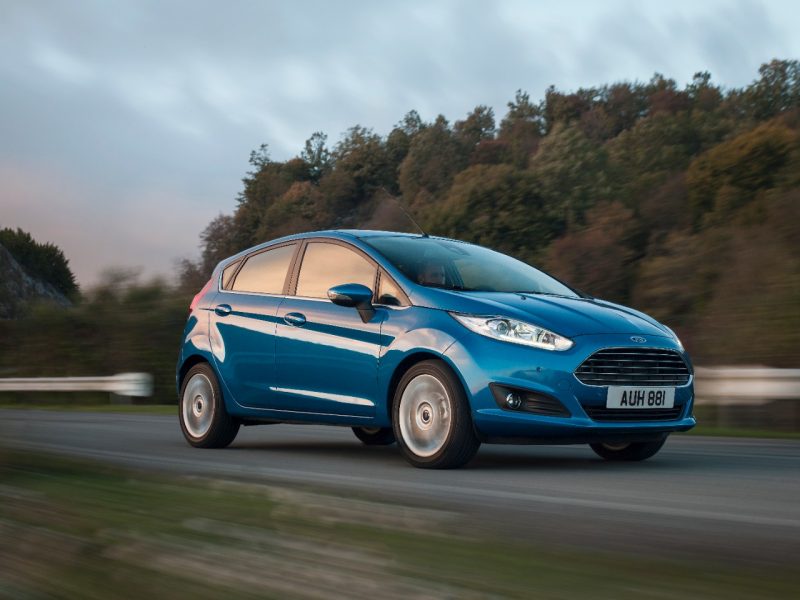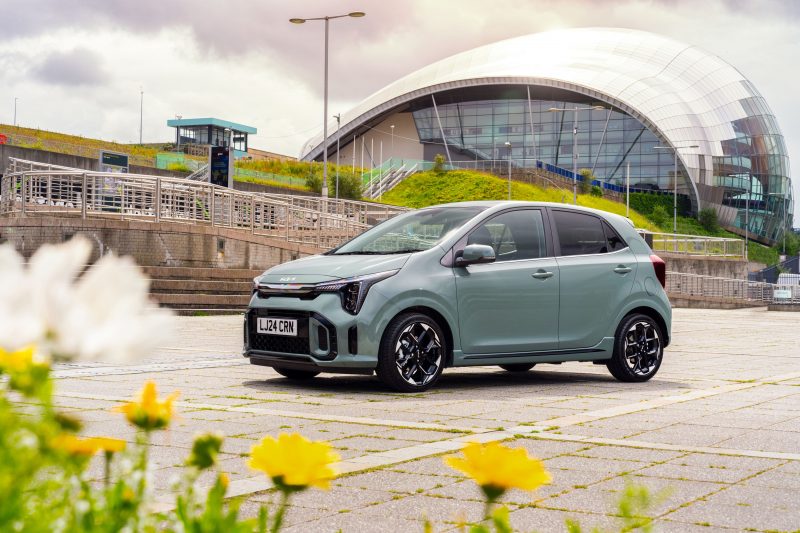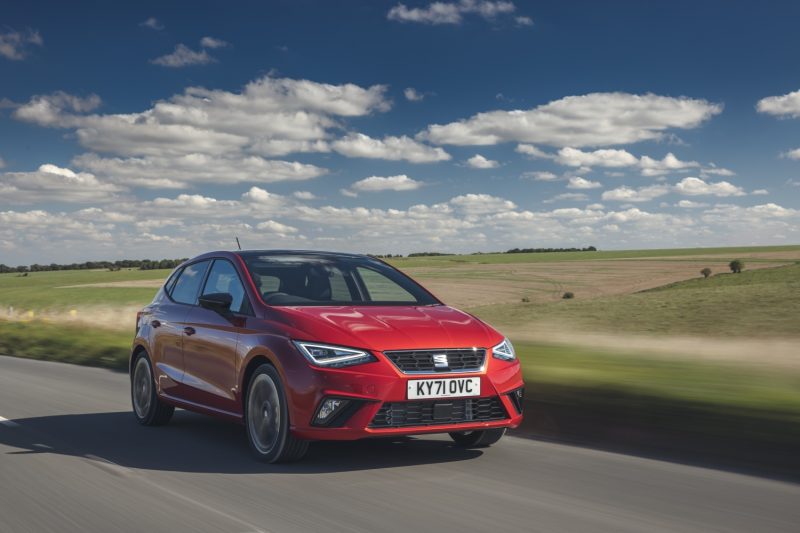Available with seven seats as standard and efficient hybrid powertrains, is Hyundai’s flagship SUV the one to beat? Cameron Richards finds out.
What is it?
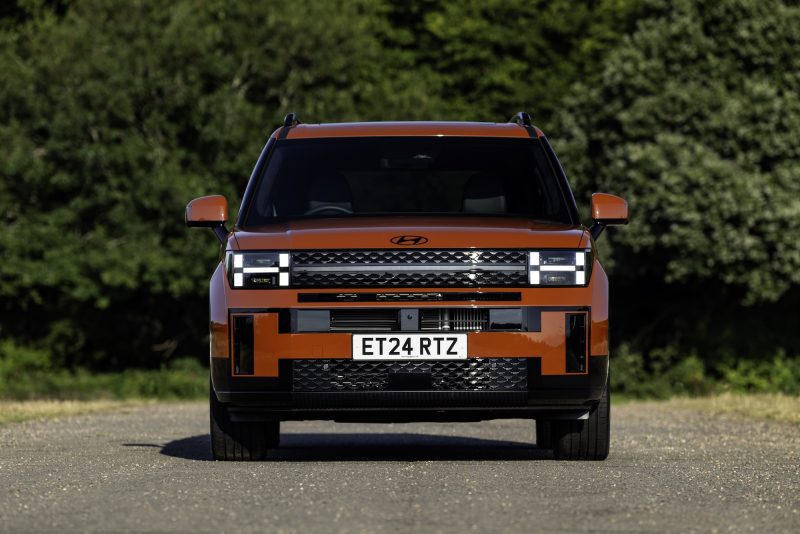
The Santa Fe has become one of the most recognisable models in Hyundai’s range and that’s because it’s been around since 2001 here in the UK.
It was the first premium SUV for the brand and in the last two decades, it has improved its driving dynamics, equipment levels and drivetrains. But, does this latest fifth-generation car set a new benchmark? Let’s find out.
What’s new?

This new Santa Fe not only debuts a wild and wacky exterior but has also been given some healthy increases in space to help deliver more interior room than before.
Its cabin materials have improved and there is the option of a six-seater variant to help out when you’ve got more people to take along for the ride.
Also, while a lot of car manufacturers are pushing for EVs in this sector of the market, Hyundai has decided to go the other direction and offer this big family bus with either plug-in or hybrid powertrains only.
What’s under the bonnet?
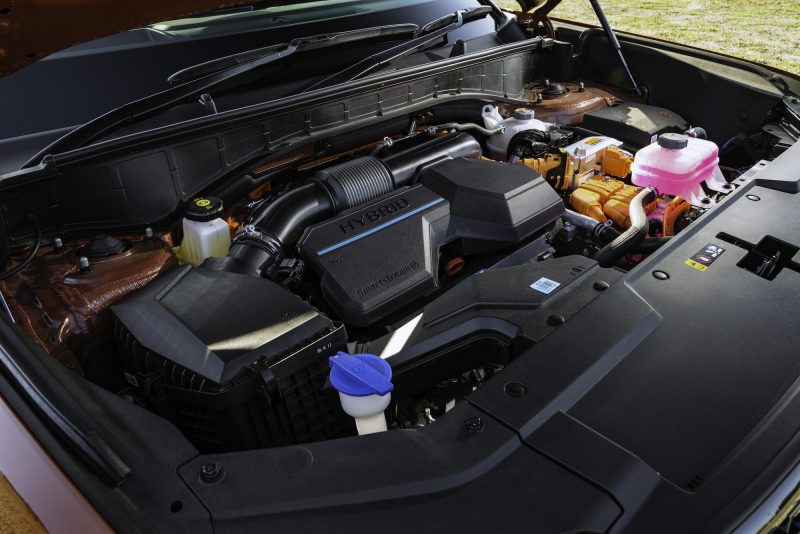
There’s a choice of two engines, a standard hybrid or a plug-in hybrid. We are driving the former which comes fitted with a 1.6-litre turbocharged four-cylinder petrol engine mated to an electric motor that produces 158bhp, 265Nm of torque and can enable 0-60mph in 9.5 seconds.
The latter is fitted with the same engine, but there is an added benefit of a 13.8kWh battery pack which boosts power up to 250bhp and reduces the Santa Fe’s 0-60mph time to 9.1 seconds. It also can do a claimed 33.6 miles on electric power alone which should help reduce emissions and fuel costs even further.
What’s it like to drive?
Been out driving and camping in the new Hyundai Santa Fe. Can’t say what it’s like to drive yet, but all will be revealed next Wednesday. pic.twitter.com/h2UGLEbdod
— Cameron Richards (@CamRichards13) August 22, 2024
Make no mistake, the Santa Fe is a big car, but to drive, it’s all surprisingly intuitive. Around the bends, it handles really well with sufficient amounts of grip and a decent level of steering feel – there is also not as much body roll as you’d think for such a tall and boxy vehicle, either. The ride is smooth, with the car only being shaken by the biggest of bumps, but overall, the ride and handling are impressive.
There is plenty of visibility, thanks to a lot of glass area and the view out the back is aided even further on our top-spec model as it’s fitted with a rear-view mirror that can be switched to a camera.
The only downsides to its driving experience are the petrol engine sounds a little strangled under hard acceleration and the steering wheel itself is fairly large which doesn’t feel natural to the touch.
How does it look?
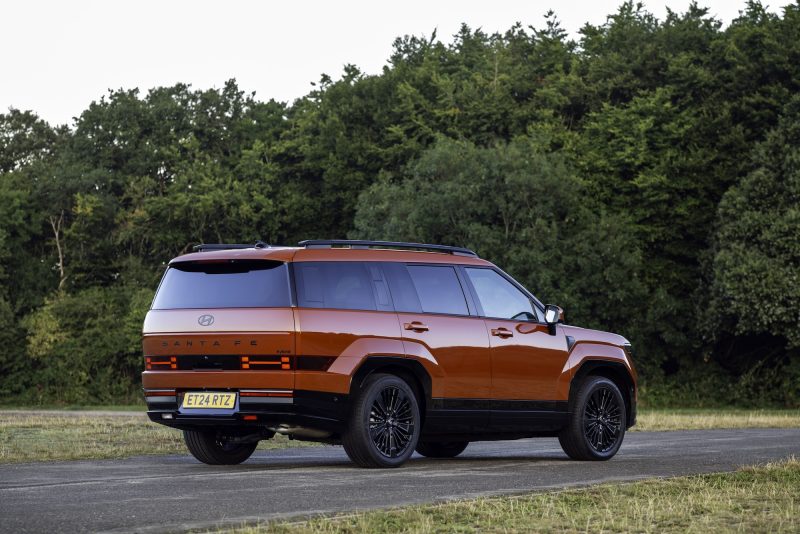
The styling of the Santa Fe is bold, to say the least with lots of angular and flat design cues. The front end features a honeycomb-style front grille as well as ‘H’ shaped front headlights that integrate LED daytime running lights.
Its side profile features rectangular wheel arch covers and gloss black roof rails, while at the back the angular body theme continues with a completely flat back and the ‘H’ styled pattern from the front headlights finds its way on the rear lights, too. Also, there is model-specific lettering and our test car featured a gloss black lower bumper that continues around to the rear wheel arches. But, overall the Hyundai Santa Fe stands out in all areas when it comes to exterior design.
What’s it like inside?
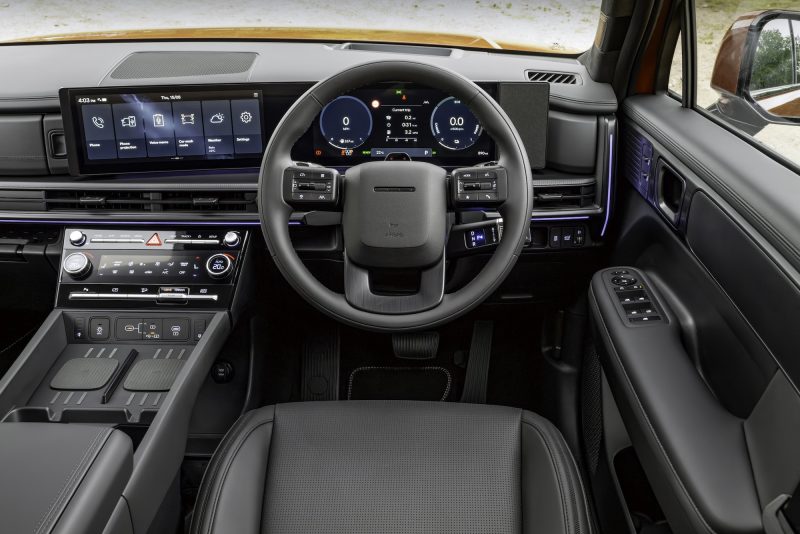
The cabin has an upmarket feel, with a lot of high-end materials used throughout and our test car even has Alcantara A, B and C pillar panels. The dashboard itself features two 12.3-inch screens for the infotainment and instrument cluster which make the design look decluttered and modern with confusing form over function.
Storage is plentiful with a large cut-out in the centre console, big enough to fit an umbrella in. There are large door pockets and you’ll find an additional storage area under the front armrest, too. The glovebox is of average size, but there is an added benefit of a longer and narrower compartment that sits above and fits flush in the dashboard.
Interior space is impressive with loads of room in the second row, with tonnes of head, knee and legroom as well as a completely flat floor. In the third row, although space will be acceptable for short journeys, the high floor means that taller passengers will find their knees are almost around their elbows – however they do get their own air-conditioning controls, USB-C ports and 12v sockets.
Boot space is where the Santa Fe shines. Our test car came with seven seats and with all the seats in place, the total capacity stands at 413 litres. However, fold the third row down and that extends to an impressive 628 litres. If you continue to fold the second row down to turn your car into a van, that space almost triples to 1,949 litres – making the Hyundai one of the most practical cars in its class.
What’s the spec like?
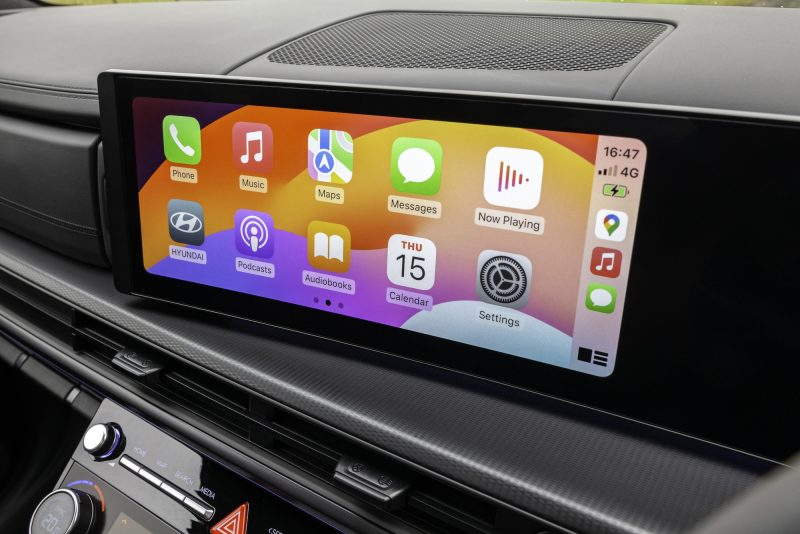
The Santa Fe spec levels are generous no matter what version you go for. There are three trim levels to choose from including Premium, Ultimate and Calligraphy.
The range kicks off at £46,775 for the Premium and features a 12.3-inch touchscreen, heated front seats and an electric tailgate.
We are driving the top-of-the-line Calligraphy which starts at £52,775 and adds touches like nappa leather interior and 20-inch black alloy wheels.
All plug-in hybrid models come with four-wheel-drive as standard, while hybrid cars have the choice of a two-wheel-drive option as well.
Verdict
Hyundai has taken a risk with the new Santa Fe and it has certainly paid off. Its looks will not be to everyone’s liking but, scratch behind its marmite exterior and what lies beneath is a car that is excellent to drive, has a very well-thought-out cabin and is incredibly versatile and flexible in its seating arrangements. Added to that is an efficient array of hybrid powertrains and you’ve got a car that will suit your family’s needs without breaking the bank to run.
The new Santa Fe is a tough act to follow and other car manufacturers should be worried as Hyundai has just upped the game even further.
Facts at a glance
- Model as tested: Hyundai Santa Fe 1.6T Hybrid Calligraphy
- Price as tested: £55,730
- Engine: 1.6-litre turbocharged petrol hybrid
- Power: 158bhp
- Torque: 265Nm
- 0-60mph: 9.6 seconds
- Top speed: 112mph
- MPG: 46.3mpg
- CO2 emissions: 167g/km
By Cameron Richards

